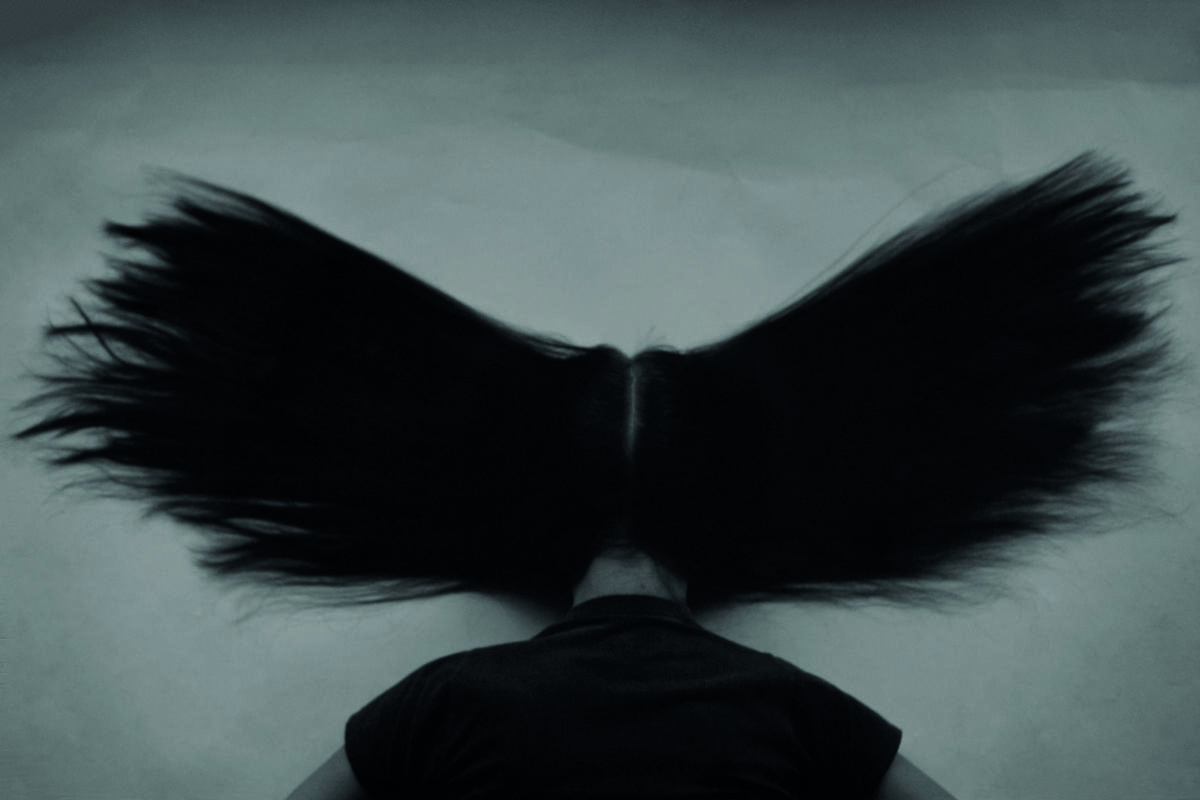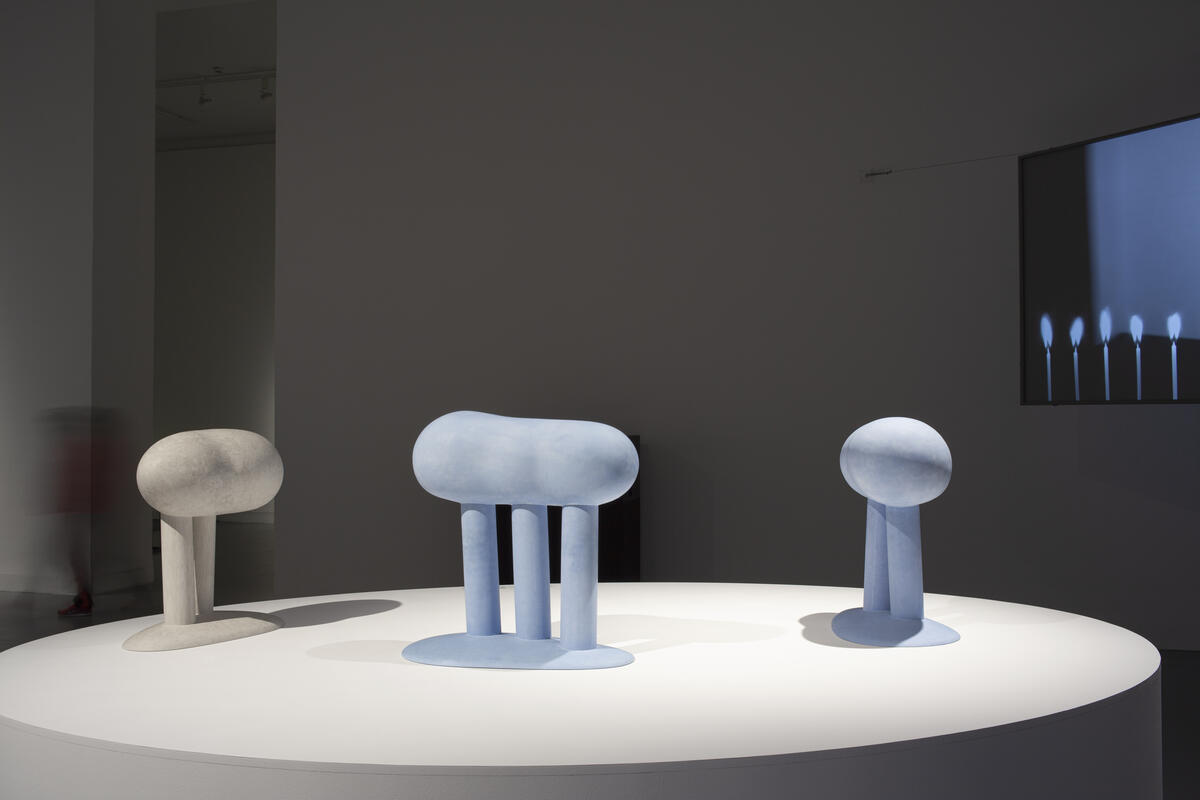With this exhibition, Trondheim kunstmuseum showcases the art of Hege Lønne, a pioneer in the field of environmental art. In the four decades of her diverse artistic practice, Lønne’s sculptural experiments, subtle animations and poetic observations of nature asked insisting questions about the place of human beings in nature.
Hege Lønne (1961–2018) studied at what is today Trondheim Academy of Fine Art from 1979 to 1984. She then moved to Poland to study at the Academy of Fine Arts in Warsaw. She attended the school’s Faculty of Sculpture, which at the time was led by the acclaimed Polish artists Jerzy Jarnuszkiewicz and Grzegorz Kowalski.
Lønne worked deliberately with sculpture and installation from the very start of her career. Artistically speaking, she was closely linked to Poland from the 1980s up to her death. In her works she combined influence from the Eastern European art scene with Scandinavian traditions and her Norwegian roots. This dual belonging played an important role in both her art and her personal life.
Central to the exhibition are sculptural experiments from the 1980s. During this decade, Lønne made use of industrial materials such as concrete and iron. She tested out various techniques that enabled her to produce the sculptures herself. Important guiding ideas concerned ‘sculpture in the expanded field’, for example module-based elements, process-based performance and installation, kinetic sculpture and impermanent form. Such ideas are particularly manifest in her sculptural performances and explorations of shadows and light, which she documented with the help of photography. ‘Open’ sculptural systems are the starting points for many key works created during her artist residency at Künstlerhaus Bethanien – DAAD in Berlin in the early 1990s. In these projects she elaborated on ideas from her time as a student, particularly ideas from Professor Jarnuszkiewicz, and the ‘Open Form’ theory developed by the Polish architect Oscar Hansen. Open Form promotes participation, embraces the notion of art-as-process, and engages the viewer, receiver and user in contrast to the conventional hierarchical relationship between the all-knowing artist and the viewer.
Throughout her career, she experimented with materials, forms and space. Making the production process visible was an important conceptual approach for Lønne. In the 1990s she worked with a series of landscape transformations and module-based terrain transformations that were often executed in plaster. She used such modules to compose spatial landscapes and presented them on pedestals and shelves. Sometimes she included objects in her landscapes, for example, a sleeping bag, a thermos or a postcard with a picture of a Norwegian mountain. In addition to mountains, forest motifs played a key role in her oeuvre.
Starting in the 1990s, Lønne began focusing on ecology – one of the most critical issues of our time. Many of her works address themes relating to the relationship between humans and nature, human intervention in nature, the exploitation of natural resources, global warming and geological processes.
‘Nature sorrow’, ‘ecological sorrow’ and ‘loss of place’ are new concepts that describe people’s awareness of climate change in combination with fear for the future and changes following in the wake of the climate crisis.[1] Lønne’s focus on ecology resonates with several aspects of the current climate debate. The romanticising of nature’s qualities exists alongside research-based empirical evidence; poetic pathos stands vis-à-vis scientific observation.
In the early 2000s Lønne created a series of short video works, more precisely, animations made with the stop-motion technique. She used simple materials to represent secret environments and everyday situations – small scenes for interpersonal communication. Lønne also used texts and work titles to introduce humour into several of her works. For example, she placed texts in nature scenes, thus causing the static words to interact with the given setting; textual interventions were laid on top of images of nature and created humous rifts between the texts and the backgrounds to which they referred. The video works allude to traditions in landscape painting but also have elements of subtle humour.
Hege Lønne did not receive the attention she deserved here in Norway. With this extensive presentation of her works, we shed light on an artist who pioneered in focusing attention on the theme of ecology and who tells us something about the complex art scene of the 1980s, ‘90s and early 2000s.
- Curator Marianne Zamecznik, Trondheim kunstmuseum.
Hege Lønne – Retrospective is organised by Trondheim kunstmuseum in collaboration with Zachęta – National Gallery of Art in Warsaw. The curator for the exhibition at Trondheim kunstmuseum is Marianne Zamecznik, and the curators for the exhibition at Zacheta are Michał Jachuła and Maria Rubersz.
Hannah Ryggen-triennale 2022
The exhibition is part of the Hannah Ryggen Triennial 2022, and opens on the same day as the other exhibitions in the triennial, at Nordenfjeldske Kunstindustrimuseum (NKIM), K.U.K and Kunsthall Trondheim. Since NKIM is closed, their exhibition will be at TKM Gråmølna. This is the first time the triennial celebrating Hannah Ryggen is spreading in the city.

